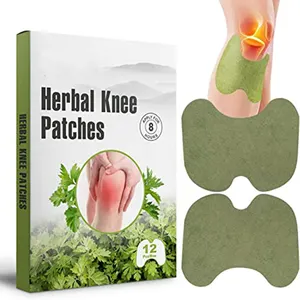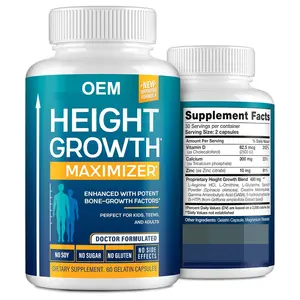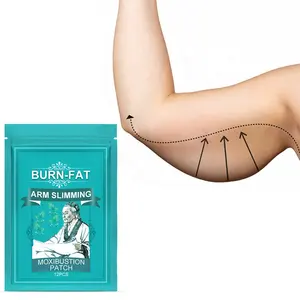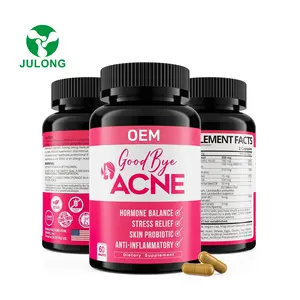Sektörünüzde popüler
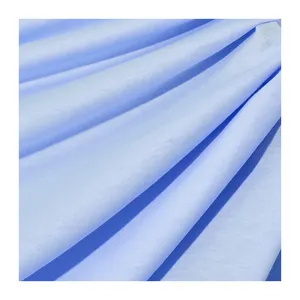





160gsm % 100% pamuk 26s tek taraflı düz spor gömlek T-shirt örme kumaş
₺199,01
Minimum Sipariş Miktarı: 25 Kilogram
Parça başına nakliye: ₺1.438,59







Özel tasarım pamuk mutfak çanak bez meyve çiçek çevre dostu İsveç bulaşık bezi biyobozunur mutfak bez bulaşık havluları
Gönderime Hazır
₺13,36 - ₺23,64
Minimum Sipariş Miktarı: 200 Adet
Parça başına nakliye: ₺9,94







Çin üreticileri fiberglas örgü kumaş yanmaz fiberglas ağ Net rulo Alkali dayanıklı fiberglas örgü
₺4,12 - ₺10,28
Minimum Sipariş Miktarı: 5000 Metre Kare
Parça başına nakliye: ₺66,45



Yeni ürün toptan 40X60cm züccaciye mutfak temizlik bezi mikrofiber zemin temizlik bezi
₺10,62 - ₺11,99
Minimum Sipariş Miktarı: 480 Adet
Parça başına nakliye: ₺261,35







Özel tasarım çevre dostu kullanımlık selüloz pamuk çanak sünger bez İsveç Dishcloth baskı mutfak yemek dishcloth
₺12,68 - ₺20,21
Minimum Sipariş Miktarı: 200 Adet
Parça başına nakliye: ₺20,21







Tedarikçisi kirkland mikrofiber temizlik bezi kirkland mikrofiber havlu çin mikrofiber bez
Gönderime Hazır
₺6,86 - ₺11,99
Minimum Sipariş Miktarı: 500 Adet
Parça başına nakliye: ₺11,65


Çin fabrikadan yeniden kullanılabilir çok amaçlı mutfak bulaşık temizleme sarı bez rulo
₺90,77 - ₺101,05
Minimum Sipariş Miktarı: 1000 Kilogram












Çin kumaş tekstil tedarikçileri tasarımcı kumaş POLYESTER SPANDEX yaprak desen jakarlı saten kumaş eğlence giyim için kumaş
₺56,52 - ₺63,03
Minimum Sipariş Miktarı: 1000 Metre











Duvar takviyeli malzeme alkali ücretsiz cam elyafı kumaş çin fabrikadan rulo
Gönderime Hazır
₺35,97 - ₺37,68
Minimum Sipariş Miktarı: 1 Metre Kare
Parça başına nakliye: ₺5.137,80






Mutfak aletleri ev mikrofiber bez havlu mavi mikrofiber yıkama bezi çin mikrofiber bez
Gönderime Hazır
₺11,65 - ₺11,99
Minimum Sipariş Miktarı: 3000 Adet
Parça başına nakliye: ₺85,98






140GSM Polyester kumaş çin tedarikçisi 9*9 temiz oda endüstriyel temizlik bezi
₺123,31 - ₺130,16
Minimum Sipariş Miktarı: 10 Poşet






Çin üretici 12*12 inç özel etiket paketi masa pencere temizleme havluları mikrofiber hiçbir solma tüy bırakmayan silgi bezler
₺3,77 - ₺6,17
Minimum Sipariş Miktarı: 10 Adet






Çok amaçlı temizlik bezi 30cm * 30cm özel boyut ev mutfak kurutma örme mikrofiber bez çin ticaret
₺8,57 - ₺10,28
Minimum Sipariş Miktarı: 500 Adet
Parça başına nakliye: ₺20,56






Araba mutfak için özelleştirme mikrofiber bez havlu yüksek kalite mikrofiber temizlik bezleri
₺1,03 - ₺1,72
Minimum Sipariş Miktarı: 10000 Adet






Fabrika toptan mikro fiber pencere camı temizleme havlusu en çok satan mikrofiber kurutma havlu mikrofiber bez
₺10,28 - ₺13,71
Minimum Sipariş Miktarı: 500 Adet






Toptan özel 30x30cm bez emici mutfak bulaşık bezi havlu araba mikrofiber temizlik bezi
₺2,75 - ₺3,77
Minimum Sipariş Miktarı: 1000 Adet






Amazon İsveç bulaşık bezi selüloz pamuklu bulaşık sünger bez
Gönderime Hazır
₺10,28 - ₺17,13
Minimum Sipariş Miktarı: 1000 Adet
Parça başına nakliye: ₺5.679,33






Gözlük Sunglass takı temizlik bezi için kabartmalı logo ile Premium gri mikrofiber süet kumaş overlok kenar
₺6,17
Minimum Sipariş Miktarı: 500 Adet












Yeni Lint ücretsiz süet mikrofiber gözlük cep telefonları gümüş Lens gözlük ekran Ipad Iphone seramik kaplama temizlik bezi
Gönderime Hazır
₺3,09 - ₺4,12
Minimum Sipariş Miktarı: 2000 Adet
Parça başına nakliye: ₺1,38






Mikrofiber cam temizleme bezi üreticisi mikrofiber Lens temizleme bezi tekstil özel Logo baskılı cep telefonu temizlik bezi
₺3,43 - ₺10,28
Minimum Sipariş Miktarı: 50 Adet
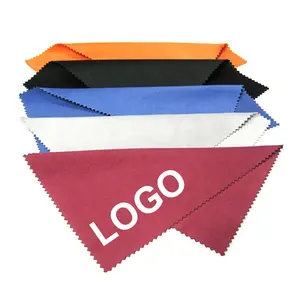





Mikrofiber bez takı gözlük izle güneş gözlüğü temizleme bezi
₺0,3426 - ₺6,51
Minimum Sipariş Miktarı: 100 Adet






Toptan özel Logo tasarımı renkli Nano sökücü mutfak havluları araba yıkama bezi mikrofiber temizlik bezi
₺4,12 - ₺9,60
Minimum Sipariş Miktarı: 5 Adet
Parça başına nakliye: ₺275,73






Paketi 10 In 40x40cm ev eşyaları mikrofiber bezler havlu pembe mavi sarı yeşil kırmızı mikrofiber temizlik bezi Buck
₺1,38 - ₺1,72
Minimum Sipariş Miktarı: 500 Adet






Tafting kumaş işaretli hatları tafting tabancası tafting kumaş yumruk iğne kumaş
₺13,02
Minimum Sipariş Miktarı: 5 Adet






Beyaz nakış rulo pamuk poli halı tafting kumaş birincil keşiş tafting kumaş tafting tabancası
₺41,11 - ₺68,51
Minimum Sipariş Miktarı: 20 Metre Kare
Parça başına nakliye: ₺116,46






Toptan özel Logo 15*15cm gözlük temizleme bezi 15*18cm güneş gözlüğü gözlük Lcd ekran için mikrofiber temizlik bezi
₺1,03 - ₺3,43
Minimum Sipariş Miktarı: 500 Adet









SPIFIT çevre dostu İsveç Dishcloths su emici pamuk mutfak temizleme süngeri bez rulo ham ıslak selüloz bulaşık bezleri
₺6,86 - ₺8,57
Minimum Sipariş Miktarı: 10000 Poşet






Özel mikrofiber bez 30x30 mikro elyaf havlu 40x4 0 mikrofiber temizlik bezleri araba/mutfak
₺2,75 - ₺5,83
Minimum Sipariş Miktarı: 100 Adet
Parça başına nakliye: ₺17,82






Mikrofiber temizlik bezi/mikrofiber gözlük/lens temizleme bezi rulo gözlük elbise
₺0,6851 - ₺1,03
Minimum Sipariş Miktarı: 1000 Adet






Toptan mikro fiber 1200 1400 gsm yıkama araba bakım mikrofiber detaylandırma mikro fiber bezler temizleme bükülmüş döngü kurutma havlu
₺8,57 - ₺20,90
Minimum Sipariş Miktarı: 2 Adet
Parça başına nakliye: ₺466,52




Masthome çevre dostu 10 adet geri dönüşümlü PET temizleme bezleri mikrofiber mutfak temizlik bezleri renkli bulaşık bezleri
₺3,77 - ₺5,14
Minimum Sipariş Miktarı: 100 Adet






Toptan yüksek kalite 260g/m² pamuk ve Polyester halı tafting için keşiş bez kumaş birincil tafting bez kilim yapma
₺61,66 - ₺68,51
Minimum Sipariş Miktarı: 2 Metre Kare






Temizlik bezi parlatma araba yıkama bezi mikrofiber temizlik mutfak havluları mikro fiber havlu mikrofiber havlu
₺5,14 - ₺5,83
Minimum Sipariş Miktarı: 2000 Adet
Parça başına nakliye: ₺22,95
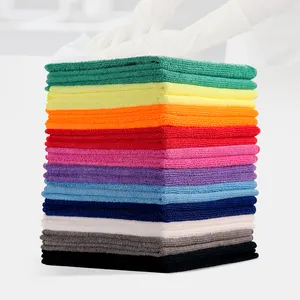





Fabrika toptan özel mikrofiber bez havlu araba mutfak için yüksek kalite mikrofiber temizlik bezleri
₺4,12 - ₺13,71
Minimum Sipariş Miktarı: 100 Adet






Özelleştirme Logo mikrofiber havlu emici hızlı kuru pencere mutfak gözlük araba yıkama bezi mikrofiber temizlik bezleri
₺5,14 - ₺6,86
Minimum Sipariş Miktarı: 500 Adet






Sihirli Tekstil Özel Baskı Mikrofiber Ekran Temizleyici şarap bardağı Yüksek Kalite Ile Parlatma Bezi
₺6,86 - ₺20,56
Minimum Sipariş Miktarı: 200 Adet
En iyi kategoriler
bez çin hakkında
bez çin bugünlerde sıradan insanlar için yeni bir şey değil ve artık kullanımı bir tabu olarak görülmüyor. Sondan bir önceki zevki arıyorsanız, muazzam olanı kontrol etmelisiniz. Alibaba.com'da bez çin koleksiyonu. Bunlar şehvetli ve kıvrımlı. bez çin her kuruşa değer ve geceyi sizin için özel kılar. Bu bebeklerin saçlarından ayak parmaklarına kadar her anlamda gerçeğe yakın bir görünümü var.
İster hayat gibi bir partner arayan yalnız bir insan olun, ister hayatına renk katmak isteyen bir çift olun, bunları kullanabilirsiniz. . O yangını yakmak için bez çin. Bunlar muhteşem. bez çin, beklentilerinize göre özelleştirilebilir. Bunlar harika. bez çin hem erkek hem de dişi versiyonlarda mevcuttur ve güvenli kullanım için ilaç sınıfı silikondan yapılmıştır. Şimdi bir tane alın ve tutku ve ateşle dolu bir gecenin tadını çıkarın.
Alibaba.com bu muhteşem seçenekleri sunuyor. Tüm vücut şekillerinde, boyutlarında ve etnik kökenlerde bez çin. İçin gereksinimleriniz ne olursa olsun. bez çin, hepsini sitede bulabilirsiniz. Bunlar. bez çin en iyi ustalar tarafından şekillendirilir ve her karmaşık ayrıntı baştan sona incelenir. Bu bebeklerin gözleri, saçları, tırnakları ve diğer tüm vücut parçaları gerçek hayattaki bir insanınkine benzer.
Alibaba.com geniş bir yelpazede sunmaktadır. bez çin bütçenize ve diğer gereksinimlerinize uyan ürünleri satın almanıza yardımcı olabilir. Bu ürünlerin kullanımı güvenli, sertifikalı ve doğası gereği çevre dostudur. Bu ürünler için OEM siparişleri mevcuttur.
İster hayat gibi bir partner arayan yalnız bir insan olun, ister hayatına renk katmak isteyen bir çift olun, bunları kullanabilirsiniz. . O yangını yakmak için bez çin. Bunlar muhteşem. bez çin, beklentilerinize göre özelleştirilebilir. Bunlar harika. bez çin hem erkek hem de dişi versiyonlarda mevcuttur ve güvenli kullanım için ilaç sınıfı silikondan yapılmıştır. Şimdi bir tane alın ve tutku ve ateşle dolu bir gecenin tadını çıkarın.
Alibaba.com bu muhteşem seçenekleri sunuyor. Tüm vücut şekillerinde, boyutlarında ve etnik kökenlerde bez çin. İçin gereksinimleriniz ne olursa olsun. bez çin, hepsini sitede bulabilirsiniz. Bunlar. bez çin en iyi ustalar tarafından şekillendirilir ve her karmaşık ayrıntı baştan sona incelenir. Bu bebeklerin gözleri, saçları, tırnakları ve diğer tüm vücut parçaları gerçek hayattaki bir insanınkine benzer.
Alibaba.com geniş bir yelpazede sunmaktadır. bez çin bütçenize ve diğer gereksinimlerinize uyan ürünleri satın almanıza yardımcı olabilir. Bu ürünlerin kullanımı güvenli, sertifikalı ve doğası gereği çevre dostudur. Bu ürünler için OEM siparişleri mevcuttur.


